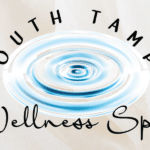Image commercially licensed from: Unsplash
A New Study Examines the Potential Link Between NSAIDs and Hormonal Contraception on the Risk of Blood Clots
The use of hormonal contraception (HC) and non-steroidal anti-inflammatory drugs (NSAIDs) is widespread among women today. As the risk of cardiovascular disease continues to rise, it is important to reevaluate the implications of their combined use. A recent study published in The BMJ investigated the potential effect of using these drugs simultaneously on the risk of venous thromboembolism (VTE), a condition characterized by blood clots in the veins.
Exploring the Association Between NSAIDs and Hormonal Contraception
Both NSAIDs and HC have been identified as independent risk factors for VTE, but it is unclear how their combined use impacts the risk. HC, which includes estrogen, increases the likelihood of VTE in the deep veins of the lower limb and the lungs. This is because estrogen stimulates the genes responsible for blood coagulation.
When taken at high doses, such as with progestin-only contraception, the risk of VTE is elevated. However, the levonorgestrel intrauterine device (LNG-IUD) poses a lower risk due to the minimal amounts of hormones released into the bloodstream.
The current study classified HC into low-, medium-, and high-risk categories. High-risk HC includes the combined estrogen and progestin patch, vaginal ring, and tablets containing specific hormones. Medium-risk HC includes other combined oral contraceptives and depot medroxyprogesterone injections. No- or low-risk HC includes progestin-only oral contraceptives, implants, and LNG-IUDs.
NSAIDs are also associated with a higher risk of VTE, including both venous and arterial thrombosis. This adverse effect is linked to the activation of platelet aggregation. As a result, NSAIDs carry a warning that they may increase the risk of strokes and heart attacks.
The study, conducted in Denmark, included women aged 15-49 without known arterial or venous thrombotic conditions, cancer, thrombophilia, or relevant gynecologic conditions. The research period spanned from 1996 to 2017.
Out of the two million women included in the study, approximately 530,000 used both HC and NSAIDs simultaneously. Among these women, almost 60% used high-risk HC, 25% used medium-risk HC, and less than 20% used low-risk or no-risk HC.
Throughout the study period, over 8,000 cases of VTE occurred, with less than 3% resulting in death within a month of the event.
The researchers compared the use of NSAIDs among women on different types of HC. They excluded periods when women may have been at higher risk of VTE due to pregnancy, surgeries, or the use of other drugs associated with thrombosis.
On average, women on HC had two NSAID prescriptions within a year of starting HC use. The most commonly used NSAID was ibuprofen, followed by diclofenac.
The findings revealed that the risk of VTE was four times higher among women using high-risk HC compared to those not using HC or NSAIDs. The risk increased by three times among women using medium-risk HC, but there was no significant increase in risk among those using low-/no-risk HC.
Additionally, the use of NSAIDs alone, without HC, was associated with an eight times higher risk of VTE compared to non-users. Diclofenac was identified as the primary NSAID contributing to this increased risk.
When women used both NSAIDs and HC simultaneously, the risk of VTE was significantly higher. The risk was 51 times higher for high-risk HC users and 26 times higher for medium-risk HC users compared to 6 times higher for no- or low-risk HC users.
Even after adjusting for potential confounders such as migraine, inflammatory disorders, hypertension, and diabetes, the use of high-risk HC alone was still associated with a six-fold higher risk of VTE, while medium-risk HC alone had a four-fold higher risk.
Among women not using HC, the risk of VTE was seven times higher for those using NSAIDs. The risk increased to 11 times higher for women on medium-risk HC and 23 times higher for those on high-risk HC. However, even the use of low-risk or no-risk HC still increased the risk of VTE by 4.5 times.
The study suggests that the use of NSAIDs by women of reproductive age is linked to a higher risk of VTE. The extent of this increased risk depends on whether NSAIDs are used in combination with HC and the specific type of HC being used.
Most women on HC used NSAIDs for short-term indications, raising the possibility of a synergistic effect between these drug categories in promoting blood clot formation. However, it is important to note that the absolute risk of VTE remains low, despite the elevated risk during the first week of NSAID use.
Further research is needed to better understand the association between NSAIDs and HC and their impact on hypercoagulability. Given the widespread use of hormonal contraception and NSAIDs, particularly among regular NSAID users, investigating this association would be of public interest. Identifying the potential risks and benefits of different hormonal contraceptives in relation to NSAID use could help guide healthcare decisions for women in their reproductive years.
Women should be aware of the potential risks associated with the combined use of NSAIDs and hormonal contraception. It is advisable to consult healthcare professionals for personalized advice and to consider alternative contraceptive options with lower associated risks when necessary.









